Discovering Spain: Five little-known valleys in the Pyrenees
The Huesca region of this mountain range is both the most central and the highest, making it a popular tourist destination with iconic spots such as Ordesa, Jaca and Aínsa. But off the beaten track there are timeless areas still to be discovered by those seeking to get away from it all
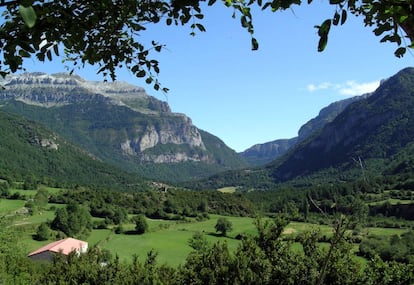
Boasting more than 200 peaks over 3,000 meters, not to mention the Ordesa national park, the famous Tena and Benasque valleys and some of the best ski resorts in the country, you might think there’s nothing left to explore in the Aragonese Pyrenees. But you’d be wrong. Beyond these well-known tourist spots, there are myriad valleys where you can still sample traditional Pyrenean life and architecture. Here are a select few.
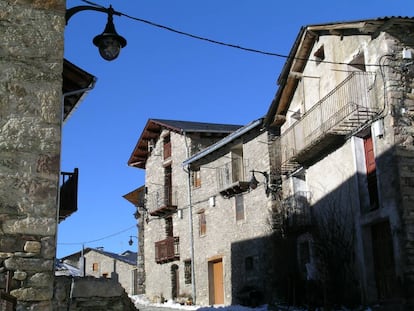
1. Barrabés and Baliera – cornerstones of the county of Ribagorza
The Barrabés and Baliera valleys – the latter also known as the Castanesa valley – are located to the far east of the Aragonese Pyrenees, bordering Catalonia and sharing its Noguera-Ribagorzana river as well as many cultural and linguistic features with its neighbor. Although these valleys are largely bypassed nowadays, they once played an important role in the ancient county of Ribagorza, founded by local nobleman Raymond I in 872 AD after it splintered away from the French county of Toulouse. Then, as now, a region of livestock and forestry, its inhabitants were a power to be reckoned with in the 10th century AD when the Moors conquered the plains. Now the secluded village of Laspaúles, lying at 1,431 meters and surrounded by the majestic peaks of El Turbón at 2,500 meters, El Gallinero at 2,800 meters and El Vallibierna at 3,000 meters, is one of the few to still be inhabited at that altitude. Castanesa, another village that thrives on livestock, features a handful of beautiful Pyrenean mansions, many of which have been restored, as well as quiet cobbled streets and two churches.
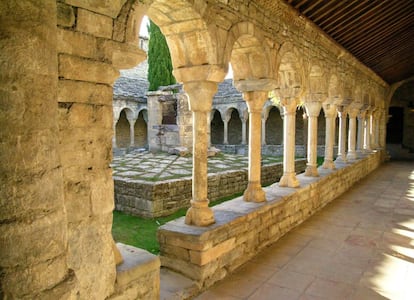
2. The Isábena valley
The Isábena valley is tucked away among the lower slopes of the Pyrenees that look out onto the great peaks of the Benasque valley. With its river feeding into the Esera, the valley was crossed centuries back by a secondary Roman road. Now, it has the road that connects Graus with Castarné running through it, taking in the strangely named villages of Merli, Esdolomada, Riguala and Rin. All are from the Jewish, Roman and Visigoth periods when the valley was prosperous and at the center of the ancient county of Ribagorza. But the real treat on this trail is Roda de Isábena. When you leave your car in the car park on the edge of the hill and walk through the quiet, meticulously restored pebbled streets, you will understand why this forgotten hamlet was chosen by the counts of Ribagorza for one of the first and most elegant Pyrenean cathedrals, which became the heart of the culture and knowledge that helped in in the re-conquest of territory further south.
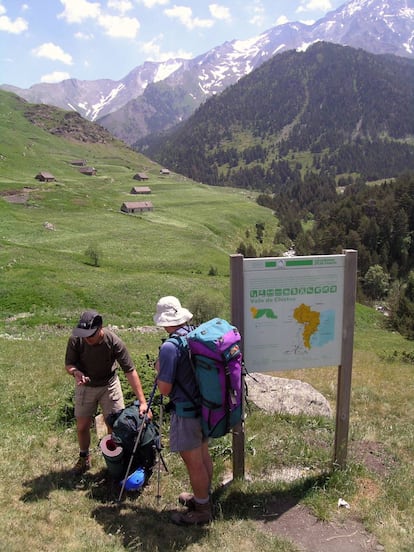
3. The Gistau valley
The caravan of women brought in by young bachelors from the village of Plan in 1985 to repopulate the valley put this far-flung corner of the Cinca river valley firmly on the map. What had once amounted to little more than a handful of rural villages surviving on livestock and agriculture became headline news in the style of William Wellman’s 1951 movie Westward Women. Lying along one of the wider points of the Cinqueta river, the Gistau valley is surrounded by the foothills of two towering mountains, Posets-Maladeta (3,369 meters) and Cotiella (2,910 meters), and is one of the most unspoiled in the central Pyrenees. Thanks to centuries of isolation, its traditions and unique architecture have been preserved. After a boom in the 16th century due to trade with France, it is now experiencing a second wind due to nature-based tourism that focuses on hiking and climbing. But though attracted by the excellent conservation in the valley, the tourist is also inevitably contributing to changes in villages such as Plan, San Juan and Gistaín. To reach the valley of Gistau – or Chistau as it is called in the local language of Chistabino – take the A-138 road from Aínsa toward Bielsa and turn right at Salinas de Sin following the Cinqueta river. It is a road that was only opened in the 1920s and the prior lack of access kept the valley all but untouched long after progress had shaped other areas in the region.
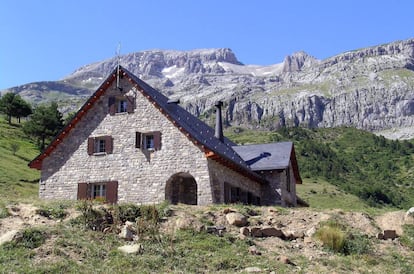
4. Borau, Aísa and Aragües, the distant valleys of the Jacetania
The two large rivers to the far west of the Aragonese Pyrenees – the Aragon river, which has its source in Somport, and the Aragon Subordan river, which starts in the Hecho valley – incorporate other smaller rivers that run through the largely forgotten valleys of Borau, Aísa and Aragües. Surrounded by mountains and rarely seen in tourist brochures, these pastures and forests have preserved their natural charm. There are no crowds or picture postcard towns in Borau and Aísa, just pure nature and tranquility. The Borau valley can be reached from the road that connects Jaca with the Somport pass, taking a detour to Aratorés between Castiello de Jaca and Villanúa. Five kilometers beyond this crossroads is the capital and only important town in the valley, which features the Lubierre river and excellent examples of Pyrenean mansions. The Aragües valley, the smallest of the three, ends at the foot of the Bisaurín (2,670 meters), the last imposing peak to the west of the Aragonese Pyrenees and the first if you are coming from the Navarre Pyrenees. The majesty of this peak, which stands alone, and the beauty of the area is a well-kept secret among mountaineers, climbers and cross-country skiers.
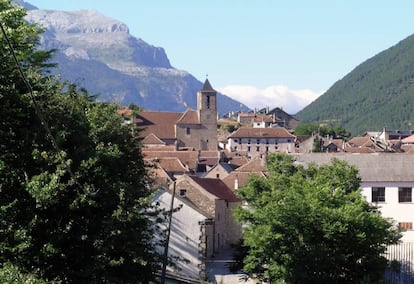
5. The valley of Hecho
The Aragon Subordan river feeds into one of the most cultural and historic valleys in the Jacetania region. Along with Ansó, the Hecho valley is found on the far west of the Aragonese Pyrenees and has boasted a paved road since Roman times. It also benefited from the building of the monastery of San Pedro de Siresa by the Aragonese counts, which became a focus of culture and religion in the region. The valley of Hecho still preserves its own language, architecture, tradition and celebrations, which have flourished thanks to its remote location. With its flat-roofed stone houses and cone-shaped chimneys, Hecho is one of the most authentic towns in the Aragonese Pyrenees. Further into the valley, beyond the Boca del Infierno where traces of the Roman road can still be seen, the Aragon Subordan valley opens up again to make way for the unique and untouched forest of Selva de Oza. The slopes of Peñaforca, on the left, and Bisaurín, on the right, are thick with beech, fir, rowan, hazel and pine, in a throwback to the Pyrenees flora centuries ago.
English version by Heather Galloway.
Tu suscripción se está usando en otro dispositivo
¿Quieres añadir otro usuario a tu suscripción?
Si continúas leyendo en este dispositivo, no se podrá leer en el otro.
FlechaTu suscripción se está usando en otro dispositivo y solo puedes acceder a EL PAÍS desde un dispositivo a la vez.
Si quieres compartir tu cuenta, cambia tu suscripción a la modalidad Premium, así podrás añadir otro usuario. Cada uno accederá con su propia cuenta de email, lo que os permitirá personalizar vuestra experiencia en EL PAÍS.
¿Tienes una suscripción de empresa? Accede aquí para contratar más cuentas.
En el caso de no saber quién está usando tu cuenta, te recomendamos cambiar tu contraseña aquí.
Si decides continuar compartiendo tu cuenta, este mensaje se mostrará en tu dispositivo y en el de la otra persona que está usando tu cuenta de forma indefinida, afectando a tu experiencia de lectura. Puedes consultar aquí los términos y condiciones de la suscripción digital.
More information
Últimas noticias
Most viewed
- David King, chemist: ‘There are scientists studying how to cool the planet; nobody should stop these experiments from happening’
- Mexico completes its trade shift with the entry into force of tariffs on China and countries without trade agreements
- Reinhard Genzel, Nobel laureate in physics: ‘One-minute videos will never give you the truth’
- Oona Chaplin: ‘I told James Cameron that I was living in a treehouse and starting a permaculture project with a friend’
- Sinaloa Cartel war is taking its toll on Los Chapitos










































